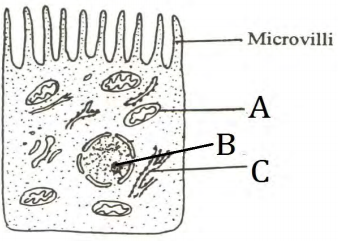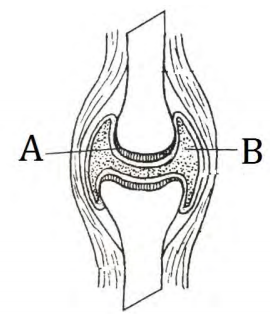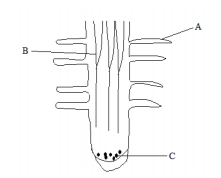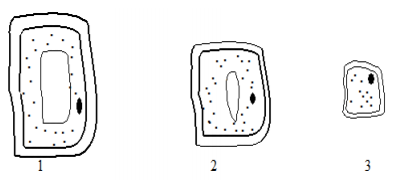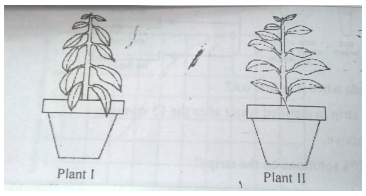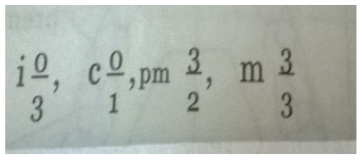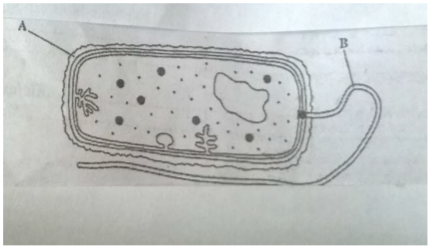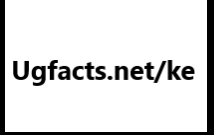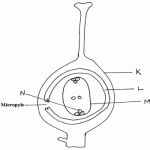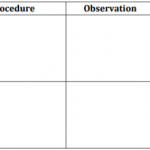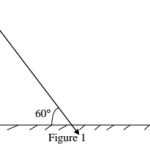KNEC KCSE Biology Paper 1 Question Paper / 2016 KCSE KAMDARA JET Examination
2016 KCSE KAMDARA JET Examination
Biology Paper 1
The diagram below represents microvilli on epithelial cells
(a) Name the parts A and C (2mks)
A
C
b) Name two parts in the human body where the above epithelial cells are found. (2mks)
4 marks
(a) Name two enzymes that are produced in their precursor forms. (2mks)
b) Name the substance that converts the enzymes named above to their active forms. (2mks)
4 marks
Human beings are ‘Homoiothermic.
(a) Explain the meaning of homoiothermic. (1mk)
(b.) What are the effects of the following in human beings? (2mks)
(i) Decrease in body temperature below the optimum level
(ii) Increase in body temperature above the optimum level.
iii) The pancreas of a mammal was surgically removed. A few hours later, glucose
was found in urine of the mammal. Explain the observation. (1 mark)
4 marks
A person walked bare feet in a swampy area. After a few weeks he started experiencing
abdominal pains and diarrhoea. His urine and stool contained blood.
(a) Name the disease the person was likely to be suffering from and the causative
agent of the disease
(i) Disease (1mk)
(ii) Causative agent (1mk)
(b.) Apart from avoiding walking bare feet in swampy area. State two other ways of
controlling the disease. (2mks)
4 marks
State the functions of the following parts of a brain.
(a) Thalamus
(b) Midbrain
(c) Medulla oblongata
3 marks
The diagram below shows a joint in a mammal. Study it and answer the questions.
(a) State the functions of parts A and B (2mks)
A
B
(b) Name the type of joint illustrated by the diagram (1mk)
(c) State two adaptations of joint named in (b) Above (2mks)
5 marks
(a) What is mutation? (1mk)
(b) Name one disorder caused by gene mutation and one disorder caused by
chromosome mutation. (2mks)
Gene mutation———————————————–
Chromosome mutation —————————————
3 marks
a) What is the disadvantage of self- pollination in plants? (1mk)
(b.) State two features that discourage self-pollination. (2mks)
3 marks
State the importance of companion cell in phloem tissue.
1 marks
State TWO effects of gibberellins on shoots of plants.
2 marks
Distinguish between resolving power and magnifying power of a microscope.
2 marks
The following diagram is a longitudinal section of a root apex.
a. Identify the parts labeled A, B and C . (3 Marks)
b. The figure below represents THREE cells 1, 2, and 3.
Identity the THREE regions of the root tip from which the cells were got from, (3 Marks)
1
2
3
6 marks
a) What is heterozygous advantage? (1 Mark)
b) Give an example. (1 Mark)
2 marks
After a colony of penicillin-sensitive bacteria was exposed to antibiotic pencillin, a
penicillin resistant emerged. Explain this observation
2 marks
What is meant by speciation?
2 marks
The diagram below shows two potted plants on a laboratory bench near a window.
a) State one observable difference between the plants I and II. (1mark)
b) State the importance of the process that is seen in plant I. (1mark)
c) Explain the process that resulted to appearance of the leaves as in plant I above. (1mark)
3 marks
Study the dental formula below.
a) Identify the mode of feeding carried out by the animal with this dental formula. (1mark)
b) Give reasons for your answer in (a) above. (1mark)
c) State the role of carnassial teeth in a lion. (1 mark)
3 marks
State two reasons why the stomach lining is not usually digested by pepsin though it is made of protein.
2 marks
State three differences between Rods and Cones.
3 marks
The diagram below shows how gaseous exchange occurs across the gills of a fish.
According to the diagram water and blood flows in opposite direction across the gills.
a) Give the term used to describe this flow. (1mark)
b) Explain the advantage of the above flow named in (a) above. (2marks)
c) What differences would be observed if water and blood flow across the gills in the same
direction. (2marks)
5 marks
The drawing shows a bacterial cell.
a) Name structures A and B.
(2marks)
b) State the kingdom to which the cell above belongs. (1marks)
c) Give two observable reasons for your answer. (2marks)
5 marks
a) What is the Rhesus factor? (1 mark)
b) A rhesus negative person received rhesus positive blood during transfusion.
Explain why it is dangerous to give similar transfusion a second time. (2 marks)
3 marks
State three adaptive features of a desert plant.
3 marks
The table below shows the oxygen consumption and carbon dioxide released at rest by a number of animals under certain conditions.
| Animal | Body mass(g) | Oxygen consumption in cm3 per hour |
Carbon dioxide released in cm per hour |
Respiratory Quotient |
| Mouse | 20 | 40 | 40 | |
| Dog | 10000 | 1960 | 2800 | |
| Sheep | 40000 | 4970 | 7100 | |
| Horse | 600000 | 700000 | 700000 | |
a) Complete the table in the last column showing respiratory quotient. (2marks)
b) From the completed table suggest which animal was oxidizing. (2marks)
i) Fats
ii) Carbohydrates
4 marks
